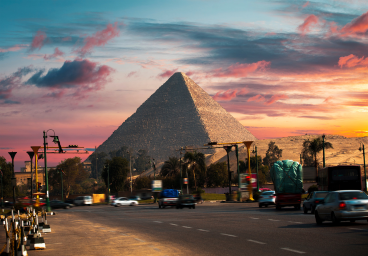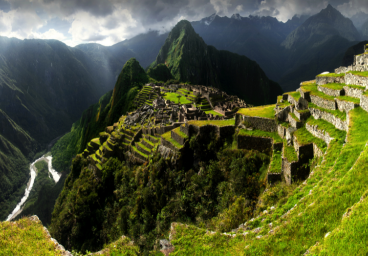Silhouetted against the golden hues of the Egyptian desert, the Pyramids of Giza stand as enduring symbols of ancient civilization’s architectural prowess and cultural richness. A marvel that has withstood the test of time, these colossal structures continue to captivate the world, inviting travelers to step into the mystique of Egypt’s bygone era.
Historical Significance
Constructed during the Fourth Dynasty of the Old Kingdom, around 2580–2560 BC, the Pyramids of Giza are the last of the original Seven Wonders of the Ancient World still in existence. Built as elaborate tombs for pharaohs, particularly Khufu, Khafre, and Menkaure, the pyramids reflect the Egyptians’ beliefs in the afterlife and their commitment to immortalizing their rulers.
Architectural Marvel
The sheer scale and precision of the pyramid construction remain awe-inspiring. The largest and most iconic, the Pyramid of Khufu (or the Great Pyramid), is composed of approximately 2.3 million limestone blocks, each weighing several tons. The precision with which these massive stones were cut, transported, and arranged continues to baffle modern engineers.
The Great Pyramid of Khufu
Khufu’s Pyramid, the largest of the three, originally stood at an impressive 146.6 meters (481 feet). While millennia have weathered its exterior, the pyramid’s grandeur and mathematical precision are still evident. The Great Pyramid once boasted a smooth, reflective limestone casing, adding to its majestic appearance.
The Sphinx: Guardian of the Pyramids
Near the pyramids, the enigmatic Sphinx stands as a guardian. Carved from a single limestone block, this colossal statue with the body of a lion and the face of a pharaoh is believed to represent Khafre. The Sphinx adds an additional layer of mystery and fascination to the Giza plateau.
Visiting the Pyramids
A visit to Giza is a journey through time. As visitors approach the pyramids, the enormity of these structures becomes apparent, and the air is filled with the whispers of ancient history. Tourists often explore the interior passages of the pyramids, marvel at the intricate hieroglyphs, and ascend to vantage points for panoramic views of the desert landscape.
Archaeological Discoveries and Ongoing Research
Despite centuries of exploration, the Pyramids of Giza continue to reveal secrets. Ongoing archaeological efforts and modern technology, including non-invasive scanning techniques, have unveiled hidden chambers, passageways, and potential insights into the construction methods employed by the ancient Egyptians.
Cultural and Religious Significance
Beyond their architectural brilliance, the pyramids hold immense cultural and religious significance. In ancient Egyptian belief, the pyramids served as conduits for pharaohs’ souls to reach the afterlife. The intricate burial rituals and the inclusion of valuable artifacts in the tombs underscore the importance Egyptians placed on the afterlife journey.
Preservation Challenges and Conservation Efforts
The pyramids face challenges from weathering, tourism impact, and environmental factors. Conservation efforts include measures to control foot traffic, restore damaged areas, and employ advanced preservation techniques to safeguard these ancient wonders for future generations.
Tourist Experience and Nighttime Magic
Visitors to Giza often witness the pyramids’ grandeur during the day and experience their magical transformation at night. Illuminated against the dark desert sky, the pyramids take on an ethereal quality, providing a mesmerizing spectacle that amplifies the timeless allure of these ancient structures.
Conclusion
The Pyramids of Giza stand as a testament to the extraordinary achievements of the ancient Egyptian civilization. More than mere monuments, they embody the spiritual beliefs, technological innovation, and cultural legacy of a civilization that flourished along the banks of the Nile. As travelers marvel at these colossal structures, they embark on a journey through time, connecting with the awe-inspiring legacy of the Pharaohs and the enduring mysteries of the ancient world.



